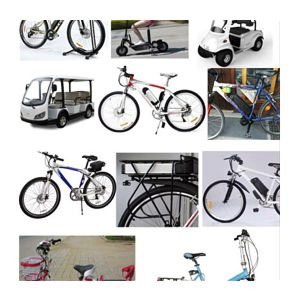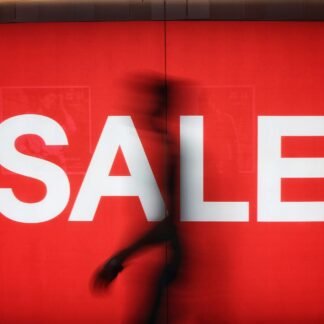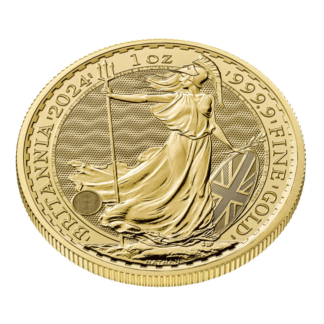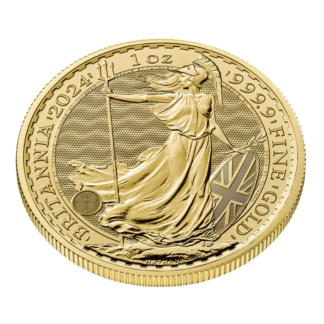ScripRx
Until the 19th century, hardly anyone recognized the vital role everyday buyers play in the world economy.
image
The storefront of a St. Louis optician, circa 1900 (Library of Congress / Corbis / VCG / Getty)
November 28, 2016
“Consumption is the sole end and purpose of all production,” Adam Smith confidently announced in The Wealth of Nations in 1776. Smith’s quote is famous, but in reality this was one of the few times he explicitly addressed the topic. Consumption is conspicuous by its absence in The Wealth of Nations, and neither Smith nor his immediate pupils treated it as a separate branch of political economy.
It was in an earlier work, 1759’s The Theory of Moral Sentiments, that Smith put his finger on the social and psychological impulses that push people to accumulate objects and gadgets. People, he observed, were stuffing their pockets with “little conveniences,” and then buying coats with more pockets to carry even more. By themselves, tweezer cases, elaborate snuff boxes, and other “baubles” might not have much use. But, Smith pointed out, what mattered was that people looked at them as “means of happiness.” It was in people’s imagination that these objects became part of a harmonious system and made the pleasures of wealth “grand and beautiful and noble.”
In German states, women were fined or thrown in jail for sporting a cotton neckerchief.
This moral assessment was a giant step towards a more sophisticated understanding of consumption, for it challenged the dominant negative mindset that went back to the ancients. From Plato in ancient Greece to St. Augustine and the Christian fathers to writers in the Italian Renaissance, thinkers routinely condemned the pursuit of things as wicked and dangerous because it corrupted the human soul, destroyed republics, and overthrew the social order. The splendour of luxus, the Latin word for “luxury,” smacked of luxuria—excess and lechery.
The term “consumption” itself entered circulation with a heavy burden. It originally derived from the Latin word consumere and found its way first into French in the 12th century, and from there into English and later into other European languages. It meant the using up of food, candles, and other resources. (The body, too, could be consumed, in this sense—this is why in English, the “wasting disease,” tuberculosis, was called “consumption.”) To complicate matters, there was the similar-sounding Latin word consummare, as in Christ’s last words on the cross: “Consummatum est,” meaning “It is finished.” The word came to mean using up, wasting away, and finishing.
Perhaps those meanings informed the way that many pre-modern governments regulated citizens’ consumption. Between the 14th and 18th centuries, most European states (and their American colonies) rolled out an ever longer list of “sumptuary laws” to try and stem the tide of fashion and fineries. The Venetian senate stipulated in 1512 that no more than six forks and six spoons could be given as wedding gifts; gilded chests and mirrors were completely forbidden. Two centuries later, in German states, women were fined or thrown in jail for sporting a cotton neckerchief.
To rulers and moralists, such a punitive, restrictive view of the world of goods made eminent sense. Their societies lived with limited money and resources in an era before sustained growth. Money spent on a novelty item from afar, such as Indian cotton, was money lost to the local treasury and to local producers; those producers, and the land they owned, were heralded as sources of strength and virtue. Consumers, by contrast, were seen as fickle and a drain on wealth.
Would God have created a world rich in minerals and exotic plants, if He had not wanted people to discover and exploit them?
Adam Smith’s reappraisal of this group in 1776 came in the midst of a transformation that was as much material as it was cultural. Between the 15th and 18th centuries, the world of goods was expanding in dramatic and unprecedented ways, and it was not a phenomenon confined to Europe. Late Ming China enjoyed a golden age of commerce that brought a profusion of porcelain cups, lacquerware, and books. In Renaissance Italy, it was not only the palazzi of the elite but the homes of artisans that were filling up with more and more clothing, furniture, and tableware, even paintings and musical instruments.
It was in Holland and Britain, though, where the momentum became self-sustaining. In China, goods had been prized for their antiquity; in Italy, a lot of them had circulated as gifts or stored wealth. The Dutch and English, by contrast, put a new premium on novelties such as Indian cottons, exotic goods like tea and coffee, and new products like the gadgets that caught Smith’s attention.
In the 1630s, the Dutch polymath Caspar Barlaeus praised trade for teaching people to appreciate new things, and such secular arguments for the introduction of new consumer products—whether through innovation or importation—were reinforced by religious ones. Would God have created a world rich in minerals and exotic plants, if He had not wanted people to discover and exploit them? The divine had furnished man with a “multiplicity of desires” for a reason, wrote Robert Boyle, the scientist famous for his experiments with gases. Instead of leading people astray from the true Christian path, the pursuit of new objects and desires was now justified as acting out God’s will. In the mid-18th century, Smith’s close friend David Hume completed the defense of moderate luxury. Far from being wasteful or ruining a community, it came to be seen as making nations richer, more civilized, and stronger.
By the late 18th century, then, there were in circulation many of the moral and analytical ingredients for a more positive theory of consumption. But the French Revolution and the subsequent reaction stopped them from coming together. For many radicals and conservatives alike, the revolution was a dangerous warning that excess and high living had eaten away at social virtues and stability. Austerity and a new simple life were held up as answers.
“We must learn to look at everything from the point of view of the consumer.”
Moreover, economic writers at the time did not dream there could be something like sustained growth. Hence consumption could easily be treated as a destructive act that used up resources or at best redistributed them. Even when writers were feeling their way towards the idea of a higher standard of living for all, they did not yet talk of different groups of people as “consumers.” One reason was that, unlike today, they did not yet single out the goods and services that households purchased, but often also included industrial uses of resources under the rubric of consumption.The French economist Jean-Baptiste Say—today remembered for Say’s law, which states that supply creates its own demand—was one of the few writers in the early 19th century who considered consumption on its own, according the topic a special section in his Treatise on Political Economy. Interestingly, he included the “reproductive consumption” of coal, wood, metal, and other goods used in factories alongside the private end-use by customers.
Elsewhere, other economists showed little interest in devising a unified theory of consumption. As the leading public moralist in Victorian England and a champion of the weak and vulnerable, John Stuart Mill naturally stood up for the protection of unorganized consumers against the interests of organized monopolies. In his professional writings, however, consumption got short shrift. Mill even denied that it might be a worthy branch of economic analysis: “We know not of any laws of the consumption of wealth as the subject of a distinct science,” he declared in 1844. “They can be no other than the laws of human enjoyment.” Anyone pitching a distinct analysis of consumption was guilty by association of believing in the possibility of “under-consumption,” an idea that to Mill was suspect, wrong, and dangerous.
It fell to a popular French liberal and writer, Frédéric Bastiat, to champion the consumer—supposedly his dying words in 1850 were “We must learn to look at everything from the point of view of the consumer.” That may have sounded prescient but it hardly qualified as a theory, since Bastiat believed that free markets ultimately took care of everything. For someone like Mill with a concern for social justice and situations when markets did not function, such laissez-faire dogma was bad politics just as much as bad economics.
By the middle of the 19th century, then, there was a curious mismatch between material and intellectual trends. Consumer markets had expanded enormously in the previous two centuries. In economics, by contrast, the consumer was still a marginal figure who mainly caught attention in situations of market failure, such as when urban utilities failed or cheated their customers, but rarely attracted it when it came to the increasingly important role they’d play in the expansion of modern economies.
Nations with high demand were also the most energetic and powerful.
Theory finally caught up in 1871, when William Stanley Jevons published his Theory of Political Economy. “The theory of economics,” he wrote, “must begin with a correct theory of consumption.” Mill and his ilk had it completely wrong, he argued. For them the value of goods was a function of their cost, such as the cloth and sweat that went into making a coat. Jevons looked at the matter from the other end. Value was created by the consumer, not the producer: The value of the coat depended on how much a person desired it.
Further, that desire was not fixed but varied, and depended on a product’s utility function. Goods had a “final (or marginal) utility,” where each additional portion had less utility than the one before, because the final one was less intensely desired, a foundational economic concept that can be understood intuitively through cake: The first slice may taste wonderful, but queasiness tends to come after the third or fourth. Carl Menger in Austria and Léon Walras in Switzerland were developing similar ideas at around the same time. Together, those two and Jevons put the study of consumption and economics on entirely new foundations. Marginalism was born, and the utility of any given good could now be measured as a mathematical function.
It was Alfred Marshall who built on these foundations and, in the 1890s, turned economics into a proper discipline at the University of Cambridge. Jevons, he noted, was absolutely right: The consumer was the “ultimate regulator of demand.” But he considered Jevons’s focus on wants was too static. Wants, Marshall wrote, are “the rulers of life among lower animals” and human life was distinguished by “changing forms of efforts and activities”—he contested that needs and desires changed over time, and so did the attempts and means devoted to satisfying them. People, he believed, had a natural urge for self-improvement and, over time, moved from drink and idleness to physical exercise, travel, and an appreciation of the arts.
For Marshall, the history of civilization resembled a ladder on which people climbed towards higher tastes and activities. It was a very Victorian view of human nature. And it reflected a deep ambivalence towards the world of goods that he shared with such critics of mass production like the designer William Morris and the art critic John Ruskin. Marshall believed fervently in social reform and a higher standard of living for all. But at the same time, he was also deeply critical of standardized mass consumption. His hope was that people in the future would learn instead to “buy a few things made well by highly paid labour rather than many made badly by low paid labour.” In this way, the refinement of consumers’ taste would benefit highly-skilled workers.
The growing attention to consumption was not limited to liberal England. In imperial Germany, national economists turned to it as an indicator of national strength: Nations with high demand were also the most energetic and powerful, it was argued. The first general account of a high-consumption society, however, came not surprisingly from the country with the highest standard of living: the United States. In 1889, Simon Patten, the chair of the Wharton School of Business, announced that the country had entered a “new order of consumption.” For the first time, there was a society that was no longer fixated on physical survival but that now enjoyed a surplus of wealth and could think about what to do with it. The central question became how Americans spent their money and their time, as well as how much they earned. People, Patten wrote, had a right to leisure. The task ahead was no longer telling people to restrain themselves—to save or to put on a hairshirt—but to develop habits for greater pleasure and welfare.
This was more than an academic viewpoint. It had radical implications for how people should consume and think about money and their future. Patten summarised the new morality of consumption for a congregation in a Philadelphia church in 1913:
I tell my students to spend all that they have and borrow more and spend that … It is no evidence of loose morality when a stenographer, earning eight or ten dollars a week, appears dressed in clothing that takes nearly all of her earnings to buy.
Quite the contrary, he said, it was “a sign of her growing moral development.” It showed her employer that she was ambitious. Patten added that a “well-dressed working girl … is the backbone of many a happy home that is prospering under the influence that she is exerting over the household.” Some members at the Unitarian Church were outraged, insisting, “The generation you’re talking to now is too deep in crime and ignorance … to heed you.” Discipline, not spending on credit, was what they needed. Whether they liked it or not, the future would be with Patten’s more liberal, generous view of consumption.
* * *
Economists were not the only ones who discovered consumption in the late 19th century. They were part of a larger movement that included states, social reformers, and consumers themselves. These were years when steamships, trade, and imperial expansion accelerated globalization and many workers in industrial societies started to benefit from cheaper and more varied food and clothing. Attention now turned to “standard of living,” a new concept that launched thousands of investigations into household budgets from Boston to Berlin and Bombay.
The central idea behind these inquiries was that the welfare and happiness of a household was determined by habits of spending, and not just earnings. A better understanding of how money was spent assisted social reformers in teaching the art of prudent budgeting. In France in the 1840s, Frédéric Le Play compiled 36 volumes on the budgets of European workers. In the next generation, his student Ernst Engel took the method to Saxony and Prussia, where he professionalized the study of social statistics. He fathered Engel’s law, which held that the greater a family’s income, the smaller the proportion of income spent on food. For those of Engel’s contemporaries who worried about revolutions and socialism, there was hope here: Less spending on food translated into more money for personal improvement and social peace.
Above all, it was citizens and subjects who discovered their voice as consumers. Today, the fin-de-siècle is remembered for its cathedrals of consumption, epitomized by the Bon Marché in Paris and Selfridges in London. While they did not invent the art of shopping, these commercial temples were important in widening the public profile and spaces for shoppers, especially for women.
“The 19th century has been the century of producers. Let us hope that the 20th century will be that of consumers.”
Intriguingly, though, it was not there in the glitzy galleries but literally underground, through the new material networks of gas and water, that people first came together collectively as consumers. A Water Consumers’ Association was launched in Sheffield in 1871 in protest against water taxes. In addition, needs and wants themselves were changing, and this expanded notions of entitlements and rights. In England, middle-class residents at this time were becoming accustomed to having a bath and refused to pay “extra” charges for their extra water. A bath was a necessity, not a luxury, they argued, so they organized a consumer boycott.
The years before the First World War turned into the golden years of consumer politics. By 1910, most working-class families and every fourth household in England was a member of a consumer cooperative. In Germany and France, such groups counted over a million members. In Britain, the Woman’s Cooperative Guild was the largest women’s movement at the time. Organizing as consumers gave women a new public voice and visibility; after all, it was the “women with the baskets”, as these working-class housewives were called, who did the shopping.
And it was women who marched in the vanguard of ethical consumerism. Consumer leagues sprang up in New York, Paris, Antwerp, Rome, and Berlin. In the United States, the league grew into a national federation with 15,000 activists, headed by Florence Kelley, whose Quaker aunt had campaigned against slave-grown goods. These middle-class consumers used the power of their purses to target sweatshops and reward businesses that offered decent working conditions and a minimum wage.
“The consumer,” a German activist explained, “is the clock which regulates the relationship between employer and employee.” If the clock was driven by “selfishness, self-interest, thoughtlessness, greed and avarice, thousands of our fellow beings have to live in misery and depression.” If, on the other hand, consumers thought about the workers behind the product, they advanced social welfare and harmony. Consumers, in other words, were asked to be citizens. For women, this new role as civic-minded consumers became a powerful weapon in the battle for the vote. This call on the “citizen-consumer” reached its apotheosis in Britain on the eve of the First World War in the popular campaigns for free trade, when millions rallied in defense of the consumer interest as the public interest.
Even before these movements took shape, many advocates had predicted a steady advance of consumer power throughout the 1900s. “The 19th century has been the century of producers,” Charles Gide, the French political economist and a champion of consumer cooperatives, told his students in 1898. “Let us hope that the 20th century will be that of consumers. May their kingdom come!”
Markets, choice, and competition are now seen to be the consumer’s best friend—not political representation.
Did Gide’s hope come true? Looking back from the early 21st century, it would be foolish not to recognize the enormous gains in consumer welfare and consumer protection that have taken place in the course of the last century, epitomized by John F. Kennedy’s Consumer Bill of Rights in 1962. Cars no longer explode on impact. Food scandals and frauds continue but are a far cry from the endemic scandals of adulteration that scarred the Victorians.
And consumers have remained a focus of academics. Economists continue to debate whether people adjust their consumption over time to get most out of life, whether they spend depending on what they expect to earn in the future, or whether their spending is determined more by how their income compares to others’. Consumption is still an integral component of college curricula, and not only in economics and business, but in sociology, anthropology, and history, too, although the last few tend to stress culture, social customs, and habits rather than choice and the utility-maximizing individual.
Today, companies and marketers follow consumers as much as direct them. Grand critiques of consumerism as stupefying, dehumanizing, or alienating—still an essential part of the intellectual furniture of the 1960s—have had their wings clipped by a recognition of how products and fashions can provide identities, pleasure, and fodder for entirely new cultural styles. Younger generations in particular have created their own subcultures, from the Mods and rockers in Western Europe in the 1960s to Gothic Lolitas in Japan more recently. Rather than being passive, the consumer is now celebrated for actively adding value and meaning to media and products.
And yet, in other respects, today’s economies are a long way from Gide’s kingdom of consumers. Consumer associations and activism continue, but they have become dispersed between so many issues that they no longer carry the punch of the social-reform campaigns of the early 20th century; today there are, for example, movements for slow food, organic food, local food, fair-trade food—even ethical dog food.
In hard times, like the First and Second World Wars, some countries introduced consumer councils and ministries, but that was because states had a temporary interest in organizing their purchasing power for war efforts and to recruit them in the fight against profiteering and inflation. During peacetime, markets and vocal business lobbies returned, and such consumer bodies were just as quickly wound up again. Welfare states and social services have taken over many of the causes for which consumer leagues fought a century ago. India has a small Ministry of Consumer Affairs, but its primary role is to raise awareness and fight unfair practices. In many less developed countries, consumers continue to be a vocal political force in battles over access and prices of water and energy. In the richest societies today, though, consumers have little or no organized political voice, and the great campaigns for direct consumer representation four or five generations ago have come to very little. Markets, choice, and competition are now seen to be the consumer’s best friend—not political representation. Consumers are simultaneously more powerful and powerless today than Gide had foreseen.
There have been many prophecies and headlines that predict “peak stuff” and the end of consumerism.
Today, climate change makes the future role of consumption increasingly uncertain. The 1990s gave birth to the idea of sustainable consumption, a commitment championed by the United Nations in Rio de Janeiro in 1992. Price incentives and more-efficient technologies, it was hoped, would enable consumers to lighten the material footprint of their lifestyles. Since then, there have been many prophecies and headlines that predict “peak stuff” and the end of consumerism. People in affluent societies, they say, have become bored with owning lots stuff. They prefer experiences instead or are happy sharing. Dematerialization will follow.
Such forecasts sound nice but they fail to stand up to the evidence. After all, a lot of consumption in the past was also driven by experiences, such as the delights of pleasure gardens, bazaars, and amusement parks. In the world economy today, services might be growing faster than goods, but that does not mean the number of containers is declining—far from it. And, of course, the service economy is not virtual, and requires material resources too. In France in 2014, people drove 32 billion miles to do their shopping—that involves a lot of rubber, tarmac, and gas. Digital computing and WiFi absorb a growing share of electricity. Sharing platforms like Airbnb have likely increased frequent travel and flights, not reduced them.
Moreover, people may say they feel overwhelmed or depressed by their possessions but in most cases this has not converted them to living more simply. Nor is this a peculiarly American or Anglo-Saxon problem. In 2011, the people of Stockholm bought three times more clothing and appliances than they did 20 years earlier.
How—indeed whether—consumers can adapt to a world of climate change remains the big question for the 21st century. In 1900, many reformers looked for answers to questions about social reform, social responsibility, and consumer representation. Climate change is its own monumental challenge, but there may be lessons that can be learned from that earlier history of the consumer. Consumers were identified as important players in tackling social blight and economic injustice. As buyers, they had some influence over what was produced, its quality as well as quantity. Organizing their interests added an important voice to the arena of public politics. These remain valuable insights: Consumers may not hold the answers for everything, but that does not mean they should be treated as merely individual shoppers in the market.
About the Author
Frank Trentmann is a professor of history at Birkbeck College, University of London. He is the author of Empire of Things: How We Became a World of Consumers, from the Fifteenth Century to the Twenty-First.















































